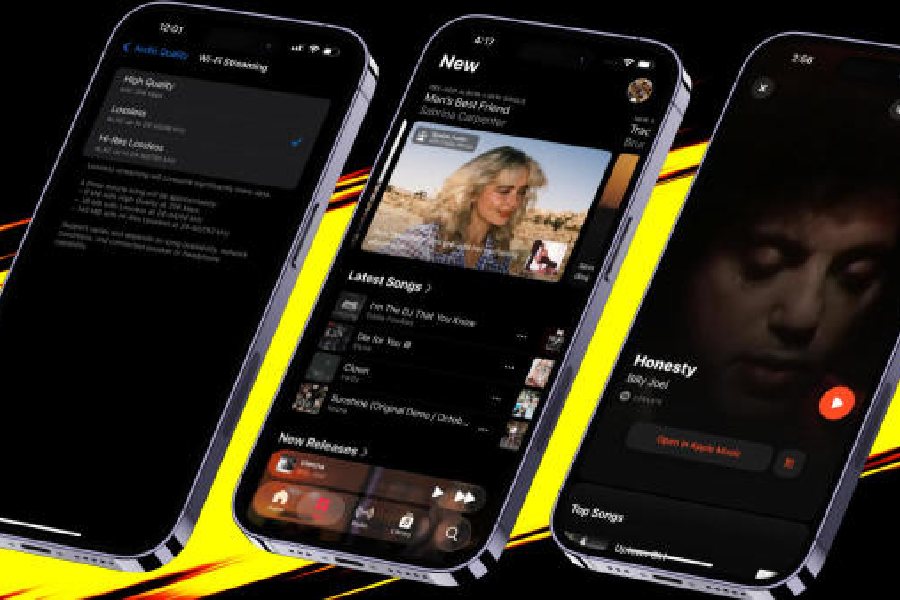On June 30, 2015, Apple introduced a service that took the company’s close relationship with the music industry a notch higher — Apple Music. This is the company that has transformed the way we consume music, first with iTunes and iPod. A decade ago came Apple Music.
Before streaming music services appeared, the idea of paying for music digitally was unthinkable. Steve Jobs changed that. His favourite was the Beatles. “If the vault was on fire and I could grab only one set of master tapes, I would grab the Beatles,” Jobs once said.
Apple Music was the “one more thing” announcement of 2015. “We had a long relationship with music at Apple and music has held a very rich history of change, some of which we played a part in. Apple Music is the next chapter in music. It will change the way you experience music forever,” said Apple CEO Tim Cook back then.
Here is why the streaming service remains more relevant than ever before.
Reason #1: Hi-Res Lossless audio at no extra cost
One of the main reasons for sticking to Apple Music is not having to worry about high-res audio. Only once, the user needs to turn on Hi-Res Lossless audio option in Settings. Lossless files preserve every detail of the original audio. With Hi-Res Lossless turned on, you get Apple Lossless Audio Codec (ALAC) files of up to 24-bit/192KHz.
A three-minute song will be approximately 6MB with high quality at 256kbps, 36MB with Lossless at 24-bit/48KHz and 145MB with Hi-Res Lossless at 24-bit/192kHz.
In most cases, there is no need to worry about sample rate or the bit depth of any song and unlike Tidal, there is no requirement to fork over the cash for using Hi-Res Lossless audio. Apple Music’s cost doesn’t subdivide into streaming quality.
For students, it’s ₹59 a month, for individuals, ₹119, and for a family plan, it’s ₹179 (all per month). That’s all the user needs to pay in all resolutions.
Reason #2: Spatial Audio experience
The Dolby Atmos content, which Apple has dubbed Spatial Audio, is another reason that makes the service stand out. Like Hi-Res audio, it’s something that brings to life the catalogues of the likes of Brian Eno, Talking Heads and Peter Gabriel. It makes the user forget that Spatial Audio streams from Apple Music are compressed (when you hear on AirPods) to fit the Bluetooth pipe and despite the compression, the audible jump from, say, lossless stereo to Spatial is more pronounced than from moving from CD quality to any high-res format.
The Spatial Audio listening takes place on Apple headphones, especially AirPods Max. The experience stretches the sound as far backwards as it does forward, and to the left… to the right. It is reliable to say that separation and overall resolution enjoy quite a bit of an uplift. Try listening to Peter Gabriel’s i/o (In-Side Mix) to appreciate the great dynamic range.
A few years ago, Grammy Award-winning producer Giles Martin, the son of legendary Beatles producer George Martin, spoke to The Telegraph. He had just produced a new mix of the popular Beatles compilation, 1, which was first released in 2000, containing number-one singles the group had recorded.
He touched upon the need to expand tech boundaries, which Spatial Audio has done.
“My dad was a futurist and loved technology…. He was always looking for ways to have great sounds…. The point is: Going back to looking for new ways is key. The key thing with the Beatles is that... when he first served Abbey Road, the golden orb was to search for ways to create a perfect facsimile of the recording. When you record, you sound like you are in a room. What happened was with the Beatles and my dad and other people around the world…. is that how we create worlds that don’t exist? Hence Sgt. Peppers. These aren’t live records. These are things you can only imagine,” Martin said in 2022.
Music on Apple Music is like watching a film in 4K while on Spotify it’s 1080p… that’s a massive difference.
Reason 3: An app that cuts across devices
Apple Music app for Apple TV puts the music streaming experience on TV and it works exactly like it would if you were using a smartphone. It is not the case with most other music streaming apps, which have been tuned for certain devices, like smartphones or tablets. Apple Music’s tvOS app maintains the music focus.
Of course, when you are listening to Apple Music on the TV, the music is resampled to be sent out via the HDMI port, yet the overall implementation is better than the rest.
Reason 4: It’s a DJ
In the last few years, Apple Music has begun adding DJ mixes from various sources and many of the mixes are unavailable elsewhere. On top of that, the streaming service is bringing something called AutoMix, which mixes one song into the next, like a DJ. AI gets used to analyse audio features and the transitions employ features like time stretching and beat matching while delivering continuous playback.
Reason 5: Recommendations
Most people would say Spotify’s recommendation algorithm is good. It is. But so is that of Apple Music and the platform has an edge. The more you like tracks, the algorithm offers relevant options. Try to create a “station”, and usually the list is something you would enjoy.
Reason 6: Dynamic design and human touch
The most important version of Apple Music is on the iPhone. The artwork — be it album covers or videos — shines through. There is a celebration of albums instead of a simple focus on singles and the “next” track. Other streaming apps focus just on playlists. The design is cleaner here than something chaotic on Spotify.
Further, playlists on Spotify are mostly AI-driven or put together by an algorithm. Curated content always does better to connect with listeners. Spotify has a social-media approach to music while Apple is clearly focused on music and music alone.
Further, the live radio shows on Apple Music make you feel that a robot is not hovering around you. Apple Music 1 to Apple Music Hits, it’s the human feel that keeps us going. Zane Lowe, as a host, is knowledgeable, and his interviews with artistes make you feel that a few things from our radio days have been retained.
Reason 7: Karaoke
The karaoke mode can be turned on while listening to music and the level of the music can be easily turned up or down. Once the karaoke icon is toggled on, all the vocals disappear and making it a fun feature when you are with friends or during car rides.

(Left to right) Lossless, Hi-Res audio is a big part of Apple Music, the UI of the app is well designed, and there is deep integration with Shazam
Reason 8: Apple Music Classical
In 2023, Apple Music Classical launched, which is a separate app but, at the same time, an extension of Apple Music. If you subscribe to Apple Music, you have full access to the Classical app. Why do we need a separate app for classical music?
When you are looking for, say, Beethoven’s Symphony No. 7 on a music streaming service, what you will get is a list of recordings based on the “title track”. The list that’s thrown at you on a streaming service will have all kinds of takes on the symphony, even energetic rock performances. The problem is that the metadata considered by streaming services doesn’t take into account the conductor, orchestra and so on or things you would have read on the album sleeve in pre-streaming era before making a choice.
In classic music, there are, of course, arrangements but the interpretation of a piece is important. The piano player in a track can make a difference to the piece. You want to find a “track” by time of recording, conductor, location and such metadata. Detailed metadata is integral to sorting classical music, which is what you get here.
Reason 9: Shazam integration
Shazam is a music discovery technology owned by Apple. It is originally the story of four friends — Chris Barton, Philip Inghelbrecht, Avery Wang and Dhiraj Mukherjee — but it was made a part of the Apple umbrella in 2018.
Shazam’s growth has been phenomenal to the point that it has become a verb. When you Shazam, the microphone listens to a track that is being played in a restaurant or mall, recognises it and then offers to play it on Apple Music. It’s seamless.
Reason 10: Tech exclusivity
Some albums come only to Apple Music because of the many technologies that are used in the background, like Spatial Audio.
Grammy-winning engineer Ryan Hewitt was commissioned by Oasis’ Big Brother Recordings label to re-create the mixes from scratch, spending 18 months on the ambitious project. The band’s seven studio albums and five compilations have been re-created in Spatial Audio with Dolby Atmos.
Also consider the recent Brian Eno album Aurum, which is only on Apple Music due to its use of the service’s Spatial Audio technology.











